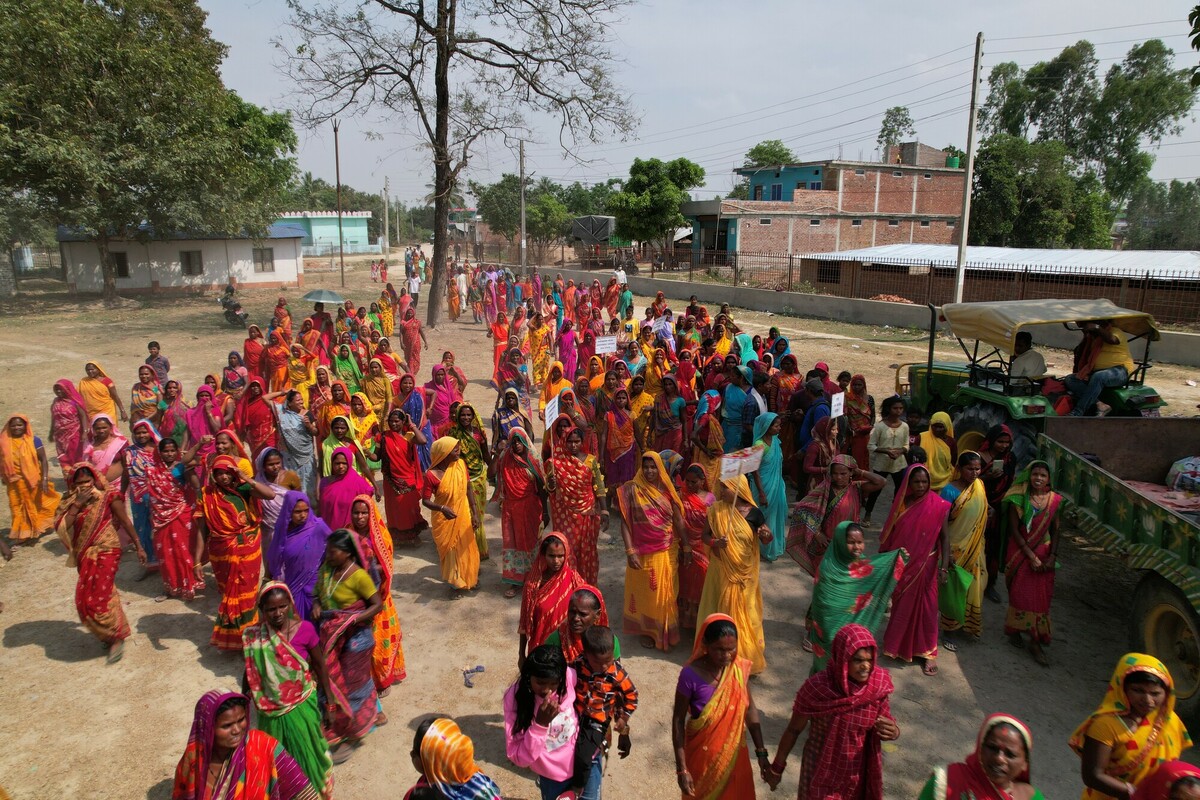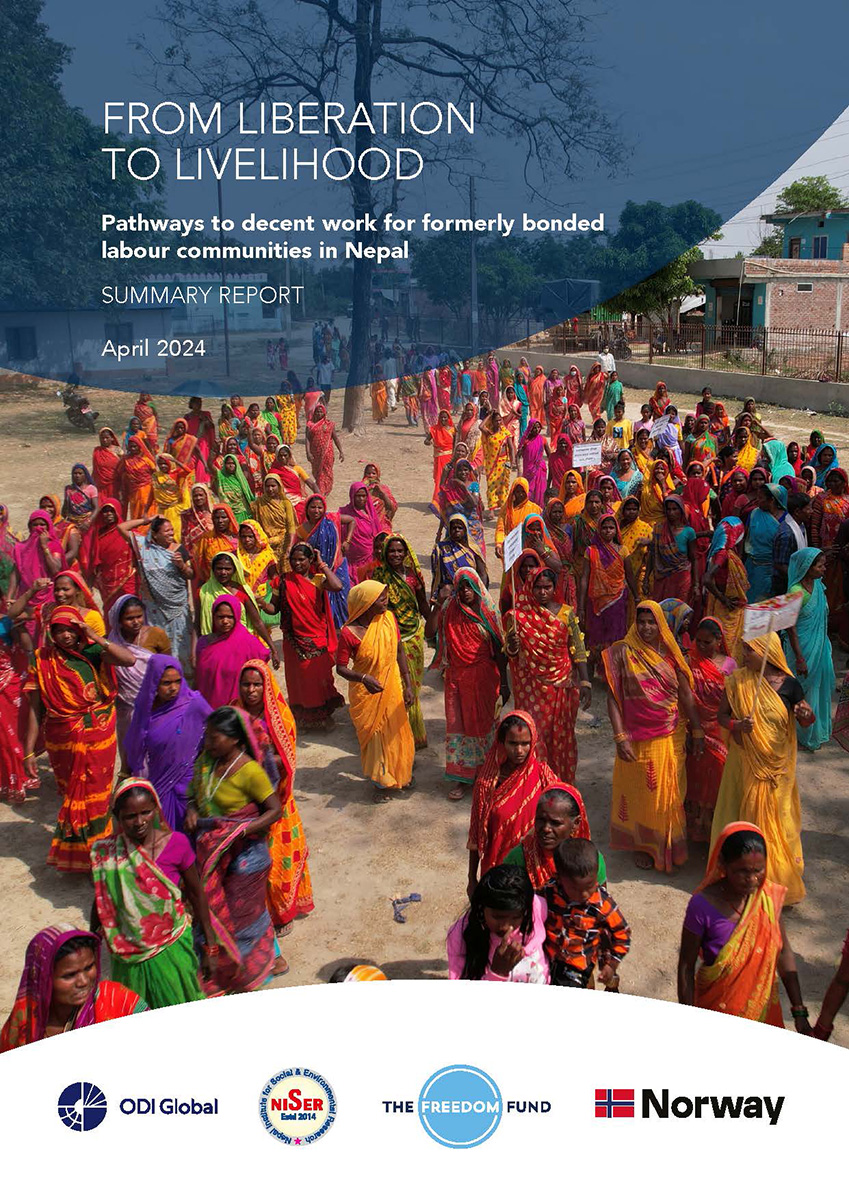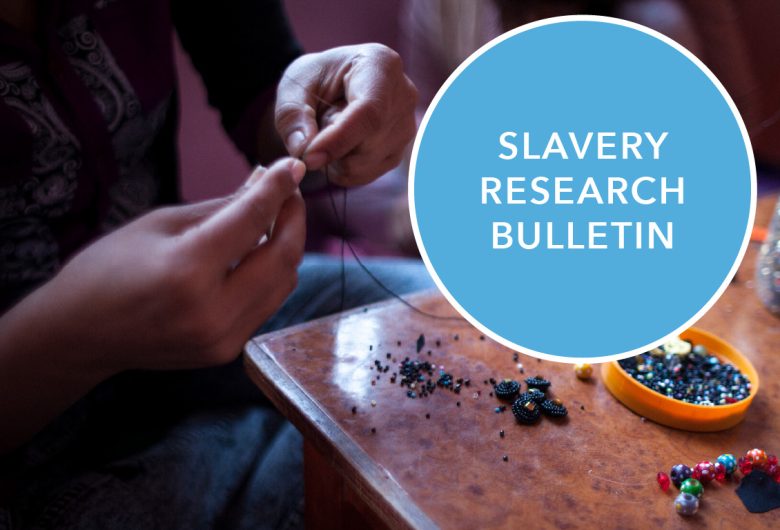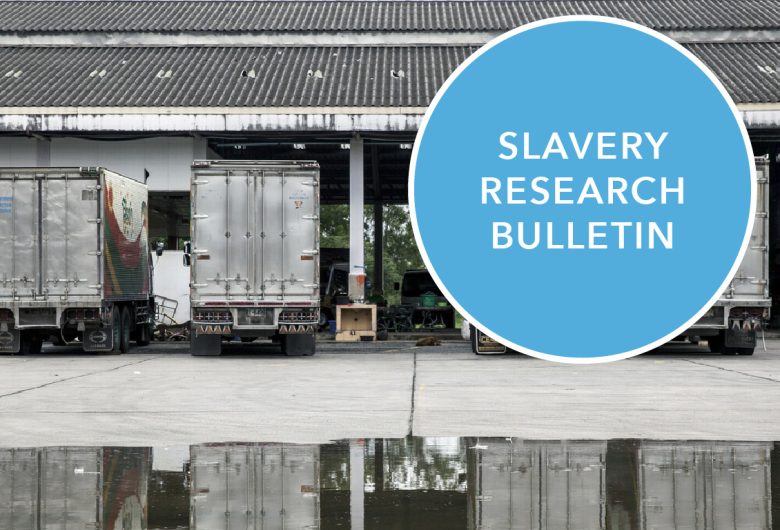Pathways to decent work for formerly bonded labour communities in Nepal
Exploitation of labour in Nepal’s agricultural sector stems from longstanding social and economic injustices shaped by patterns of debt bondage, unequal land ownership and caste-based discrimination. Despite being declared liberated by the government, the Kamaiya, Haliya and Harawa-Charawa communities have therefore, continued to face exploitative labour practices rooted in these historical socio-economic injustices.
Between 2021 and 2023, the Freedom Fund commissioned a mixed-methods study, including a quantitative study with 451 households, to ODI Global and Nepal Institute for Social & Environmental Research focusing on three historically bonded labour communities: the Kamaiya, Haliya and Harawa-Charawa across the districts of Bardiya, Kanchanpur and Saptari. The study aimed to examine the economic and social drivers of labour conditions in bonded agriculture, explore how these conditions have evolved over time and assess what these changes mean for promoting decent livelihood opportunities. Approximately 80% of the sample size of the study belonged to these three communities, the remaining 20% consisted of households in similar socio-economic conditions but not from formerly bonded labour communities.
Key insights from the study
- Forced labour remained prevalent across the study areas, particularly among more recently liberated communities. Using the ILO’s criteria of involuntary and coercive conditions, forced labour was found to be widespread – 85% for Harawa-Charawa, 80% for Kamaiya, 61% for Haliya and 32% for non-Kamaiya/Haliya/Harawa-Charawa households. It also revealed that even groups that were liberated long ago, like the Kamaiya, continued to face systemic exploitation.
- Agriculture remained the main source of income and typically offered informal, unstable and poorly paid work. Kamaiya households reported the highest average daily wages (NPR 683 / USD 5.5) while Haliya households reported the lowest (NPR 463 / USD 3.7). Seasonal instability in agriculture, lack of progression opportunities and minimal land ownership exacerbated their economic vulnerability. The lack of employment opportunities beyond agriculture also drove many into alternative, often hazardous forms of labour.
- Low and unpredictable earnings left Kamaiya, Haliya, and Harawa-Charawa households unable to save or invest, whether in children’s education or farming inputs, perpetuating poverty and driving many deeper into debt. Kamaiya families reported better financial health due to land access and diversified livelihoods, whereas Harawa-Charawa and Haliya communities continued to rely on high-interest loans and often inherited debt, further perpetuating cycles of exploitation. Over one-third (34%) of Harawa-Charawa and 25% of Haliya households had inherited debt.
- Access to land and rehabilitation packages improved resilience. Kamaiya households, who were liberated earliest, benefitted from greater access to land and rehabilitation support, linked to higher savings and a greater likelihood of using loans for investment. In contrast, over two-thirds of Haliya and Harawa-Charawa households continued to live on government owned land without secure tenure, putting them at risk of eviction and limiting their incentives to invest in improving land productivity.
Observed changes in Saptari district
In addition to applying ILO’s criteria to assess forced labour, this study also asked households to self-report whether any member was currently in bonded labour – defined as unable to freely choose one’s employer or unable to negotiate terms of work. This allowed for comparison with a 2017 prevalence study by the Institute of Development Studies, which sampled 682 households in the Saptari district.
In Saptari, self-reported bonded labour dropped from 38.4% of households in 2017 to 21.3% in 2022, a statistically significant decline (p = 0.00008). While self-reported status has been shown to underestimate the actual extent of forced labour and should be interpreted with caution, this reduction suggests an encouraging shift and reflects perceived improvements within the communities themselves.
Recommendations
The report offers a comprehensive set of recommendations across several policy domains:
- Land reforms: Facilitate fast-track allocation and registration of arable land with secure titles to households for formerly bonded labour communities.
- Agricultural reforms: Enhance farming skills, capital investment and fair market access, particularly for landless farmers.
- Non-agricultural employment: Diversify livelihoods by providing market relevant training tailored to different groups, including women and youth.
- Legal and social protections: Enforce labour laws, ensure access to vital documentation such as citizenship and establish micro-savings programs to curb intergenerational debt.
The study’s findings reinforce the need for sustained and targeted efforts to address the structural roots of forced labour in Nepal. The report finds that while legal liberation by the government was an important step forward, it is still inadequate as these communities continue to experience other forms of exploitation. While progress has been made, especially among Kamaiya communities, continued government action and civil society support are essential. Breaking the cycle of forced labour, therefore, demands long-term, inclusive and rights-based programs that support communities to live and work with dignity.




